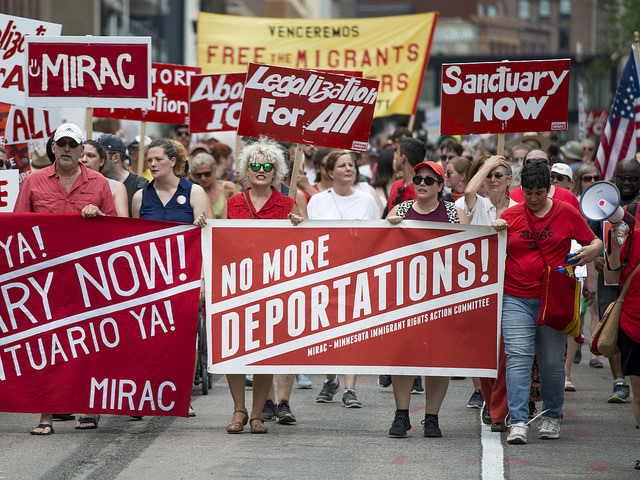
The current immigration policies and practices of the Trump administration have received significant scrutiny. Many detainees are subjected to inhumane treatment in Immigration and Customs Enforcement (ICE) facilities around the nation, demonstrated in recent reports of sexual assault and the potential death of a migrant child upon release from detention. In a recent article in The Conversation, sociologist Tanya Golash-Boza argues that the criminalization and deportation of immigrants is nothing new, but rather that the Trump administration’s actions are part of a broader pattern of mass deportation.
In 2003, the Department of Homeland Security was created, and upon its inception housed both ICE (which was also formed in 2003) and Customs and Border Protection to enforce immigration laws. According to Golash-Boza, the transferral of immigration law enforcement from the Department of Justice to the Department of Homeland Security served two purposes: changing the tone of immigration enforcement as an issue of national security and a massive cash flow to immigration law enforcement agencies.
Even though immigration is central to Trump’s image and platform, deportations were actually highest under President Obama, with three million people deported during his tenure. Tough immigration enforcement has occurred across party lines and is about more than just ICE. Golash-Boza expands,
“For the past 20 years, aggressive immigration law enforcement has been a constant across Democrat and Republican administrations. Democratic President Bill Clinton signed laws in 1996 that greatly expanded deportations. Republican George Bush created the Department of Homeland Security and, in effect, ICE. The creation of the Department of Homeland Security led to a spike in the number of people deported from the U.S.”
Golash-Boza’s research demonstrates that ending mass deportation in the United States will require more than just standing up to Trump and ICE, but addressing our history of aggressive immigration policies and its connections to the “war on terror.”

Comments 1
Mitch Crosswoods — December 29, 2023
The current immigration policies assert that the Trump administration's actions are part of a larger historical pattern of mass deportation. I am currently working on the paper about the impact of framing immigration enforcement as a national security issue and was looking for qualified help online. After reading review at https://www.yelp.com/biz/edubirdie-wilmington, I decided to hire expert and it was a right decision. It helped me to point out that the highest number of deportations occurred under President Obama, spanning both Democratic and Republican administrations over the past two decades. There is a real need to confront the broader history of aggressive immigration policies.